Marigold Flower Uses: Marigold Benefits For Gardens And Beyond
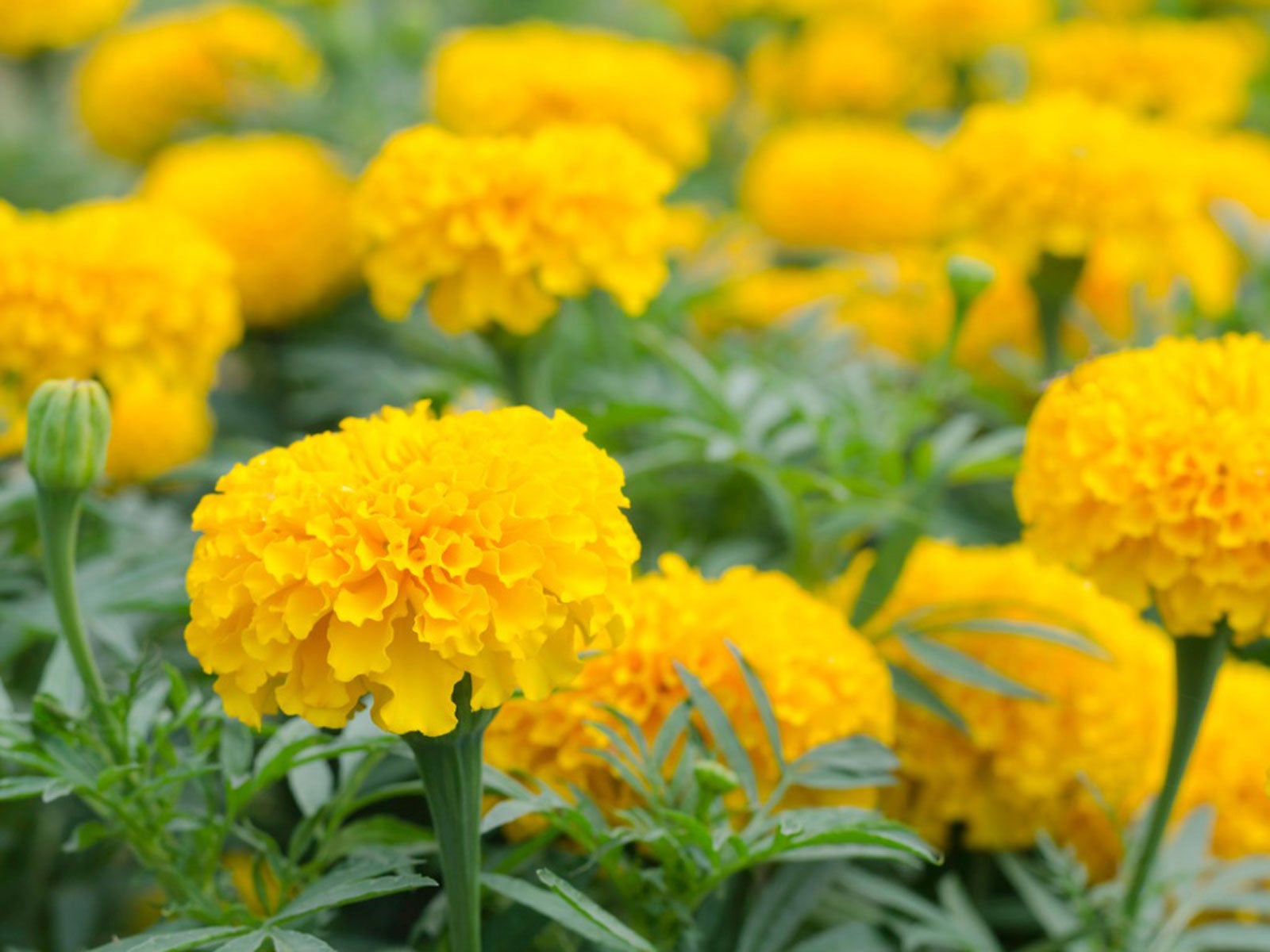

Marigolds are native to Mexico, but the sunny annuals have become incredibly popular and are grown in countries around the world. Although they are appreciated primarily for their beauty, you may not have considered the many surprising marigold benefits for gardens. Read on to learn about ways to use marigold plants in the garden.
Marigold Uses and Benefits
Check out the following marigold flower uses, and a few important marigold benefits for gardens.
- Nematode control – The roots and stems of marigolds emit a chemical that may suppress the population of root-knot nematodes, tiny soilborne worms that feed on the roots of ornamental plants and vegetables. It appears that French marigolds, particularly the ‘Tangerine’ variety, are most effective against the destructive pests.
- Bees and other beneficial insects – Marigolds attract ladybugs, parasitic wasps, hoverflies, and other beneficial insects that protect your plants from aphids and other harmful pests. The blooms, particularly single-bloom cultivars, also draw bees and other important pollinators.
- Adding variety to the landscape – Marigolds are available in sunny shades of orange, yellow, red, mahogany, or combinations. Flowers may be single or double, and in sizes ranging from 6 inches (15 cm.) to 3 feet (1 m.). One of the many uses for marigolds is adding variety to the landscape.
- Easy, breezy marigolds – Caring for marigolds couldn’t get much easier. The hardy plants tolerate sun, heat, drought, and nearly any well-drained soil. Marigolds are easy to grow from transplants, or you can start seeds indoors or directly in your garden.
- Marigold companion planting – When planted nearby, marigolds may protect cruciferous plants from cabbageworms, and tomato plants from hornworms, probably because scent confuses the pests. Marigold is also a good companion when planted near bush beans, squash, cucumbers, and eggplant.
Marigolds vs. Calendula: What’s the Difference?
Calendula (Calendula officinalis) is commonly known as English marigold, Scotch marigold, or pot marigold, particularly in Europe. In spite of the familiar nicknames, calendula is a different plant from the common marigold (Tagetes spp.). However, both are members of the Asteracea family, which includes chrysanthemums and daisies.
You may read valuable information about the medical or culinary uses of calendula or marigold. Before you consider uses for marigolds, however, take steps to learn the difference between the two. Certain parts of the calendula plant are edible, while most marigolds (with exception to specific hybrids) are toxic for humans and animals.
Gardening tips, videos, info and more delivered right to your inbox!
Sign up for the Gardening Know How newsletter today and receive a free copy of our e-book "How to Grow Delicious Tomatoes".

A Credentialed Garden Writer, Mary H. Dyer was with Gardening Know How in the very beginning, publishing articles as early as 2007.
-
 Looking For Plants To Give You The Soft And Fuzzies? Try These 5 Fuzzy Leaf Plant Options
Looking For Plants To Give You The Soft And Fuzzies? Try These 5 Fuzzy Leaf Plant OptionsLovers of texture, drama, silver foliage and tactile plants will adore these special sensory garden additions. These fuzzy leaf plant options will leave you all aglow
By Susan Albert
-
 Get Ready For A Summer Of Hummers! Grow These Full Sun Hummingbird Plants and Flowers
Get Ready For A Summer Of Hummers! Grow These Full Sun Hummingbird Plants and FlowersIf you’re lucky enough to enjoy a sunny backyard, make sure you are maxing out on your pollinator opportunities and grow these full sun hummingbird plants and flowers
By Tonya Barnett
-
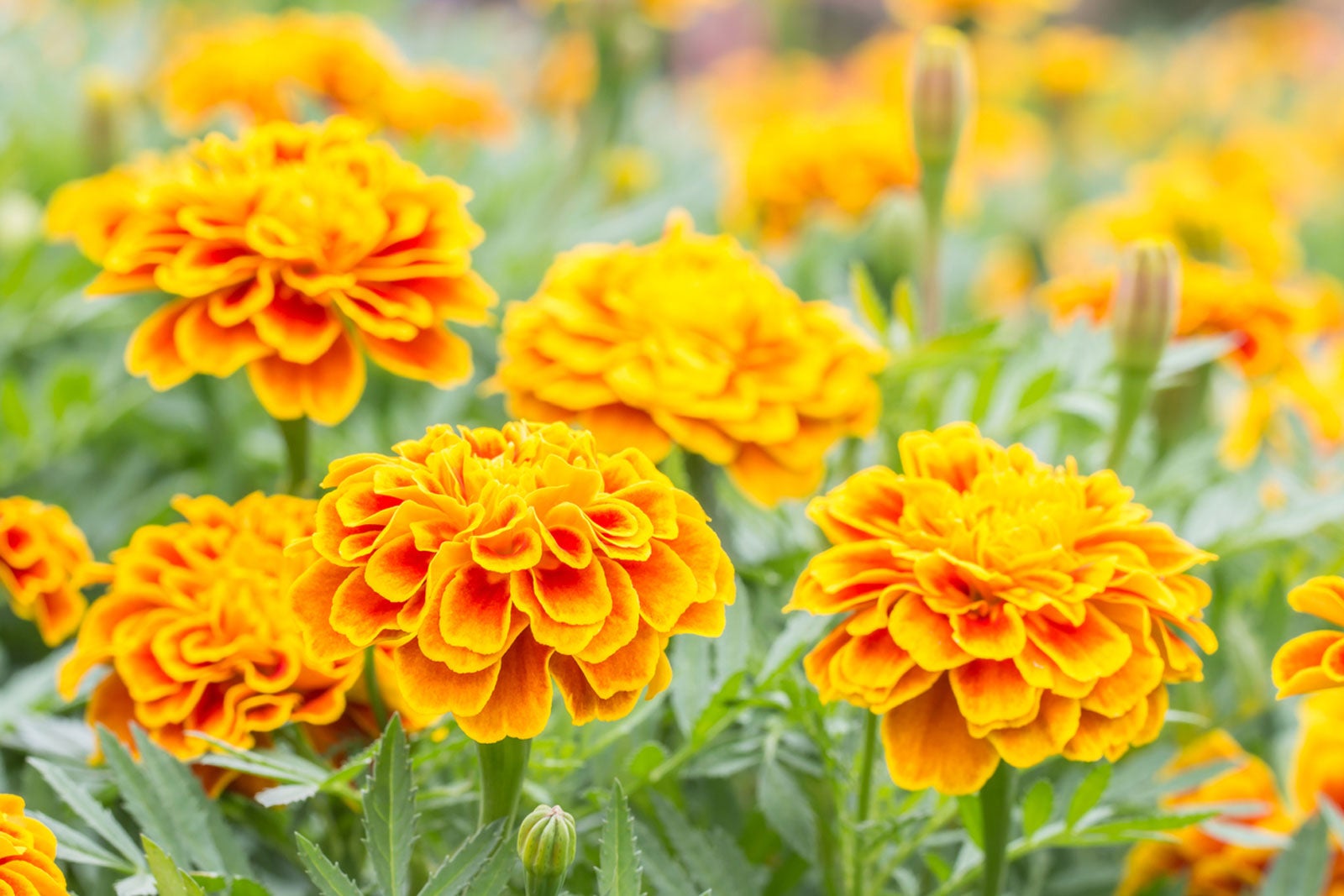 Marigold Vs. Calendula – Difference Between Marigolds And Calendulas
Marigold Vs. Calendula – Difference Between Marigolds And CalendulasIt’s a common question: Are marigold and calendula the same? The simple answer is no. Although both are members of the sunflower family, marigolds and calendula are plants with different genera. Why all the confusion? Find out in this article and how to tell them apart.
By Mary H. Dyer
-
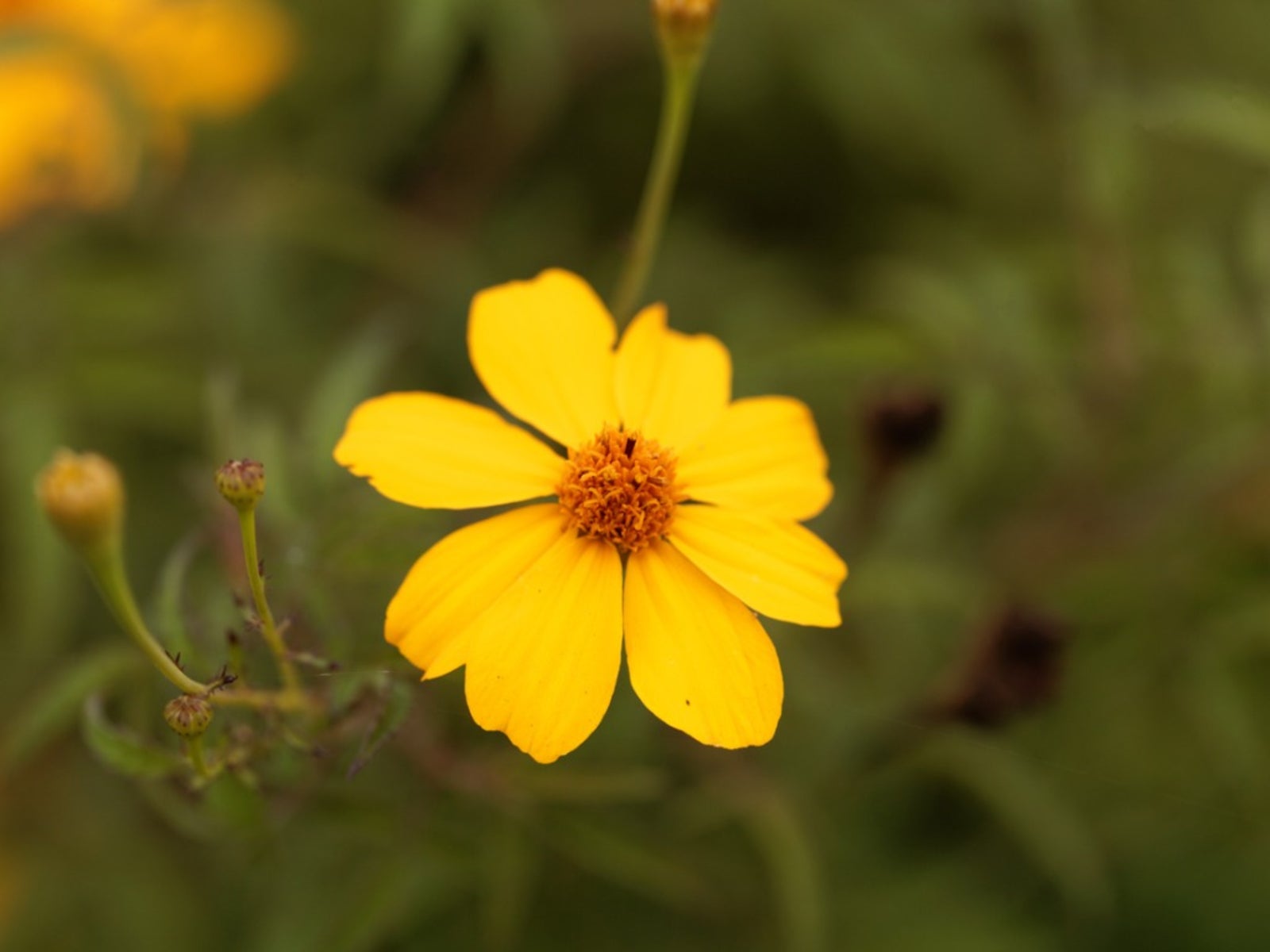 Mountain Marigold Care – How To Grow Bush Marigold Plants
Mountain Marigold Care – How To Grow Bush Marigold PlantsA beautiful annual scene is caused by the fall bloom period of Mountain Lemmon marigolds, which may also bloom sporadically in spring and summer, but save their best display for autumn. Click on this article to read more about mountain marigold plants.
By Darcy Larum
-
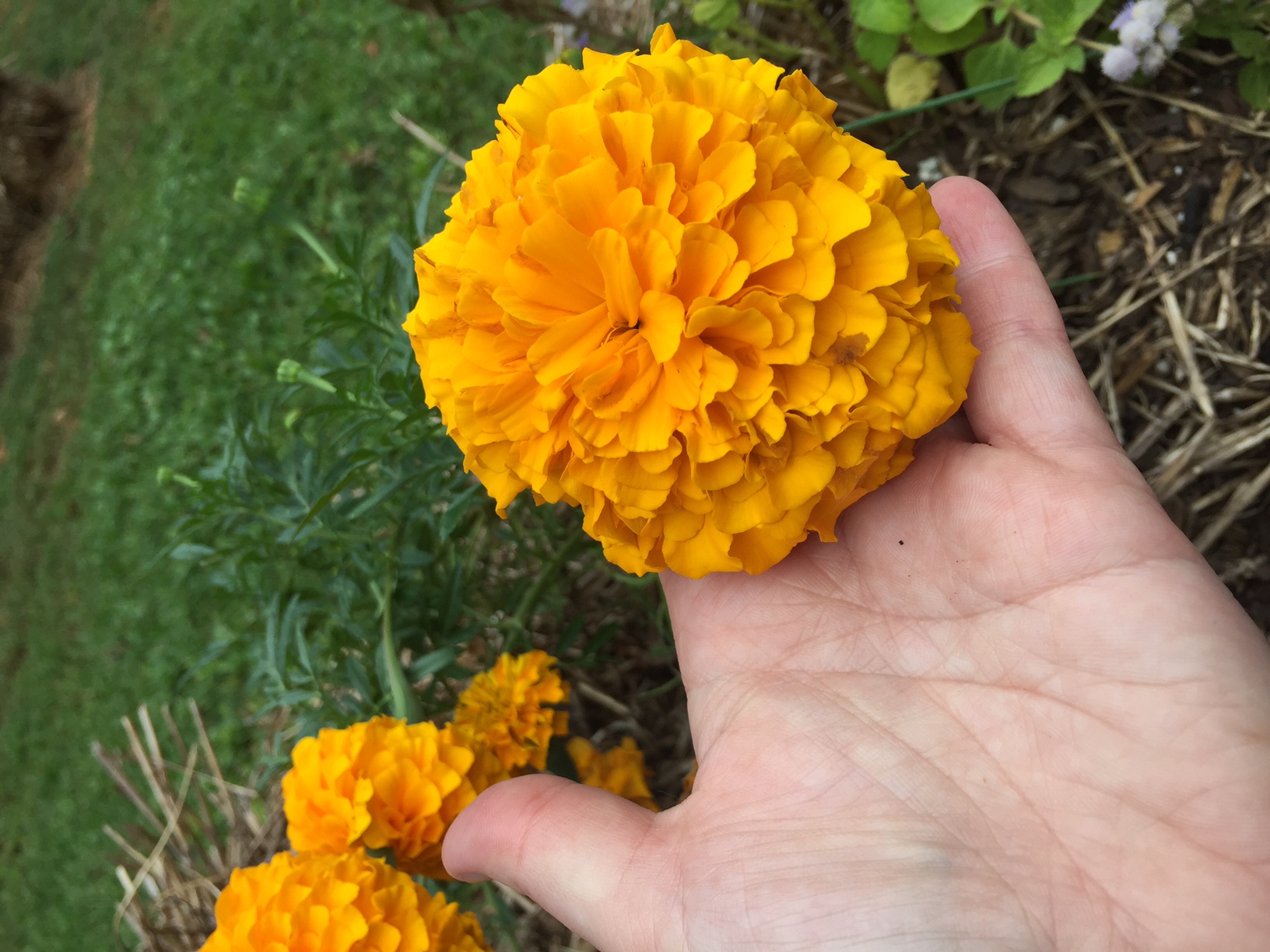 African Marigold Care: How To Grow African Marigolds
African Marigold Care: How To Grow African MarigoldsAfrican marigolds were sacred to the Aztecs, who used them as a medicine and as a ceremonial offering to the sun gods. Marigolds are still called the herb of the sun because of this. Click this article for more African marigold information.
By Darcy Larum
-
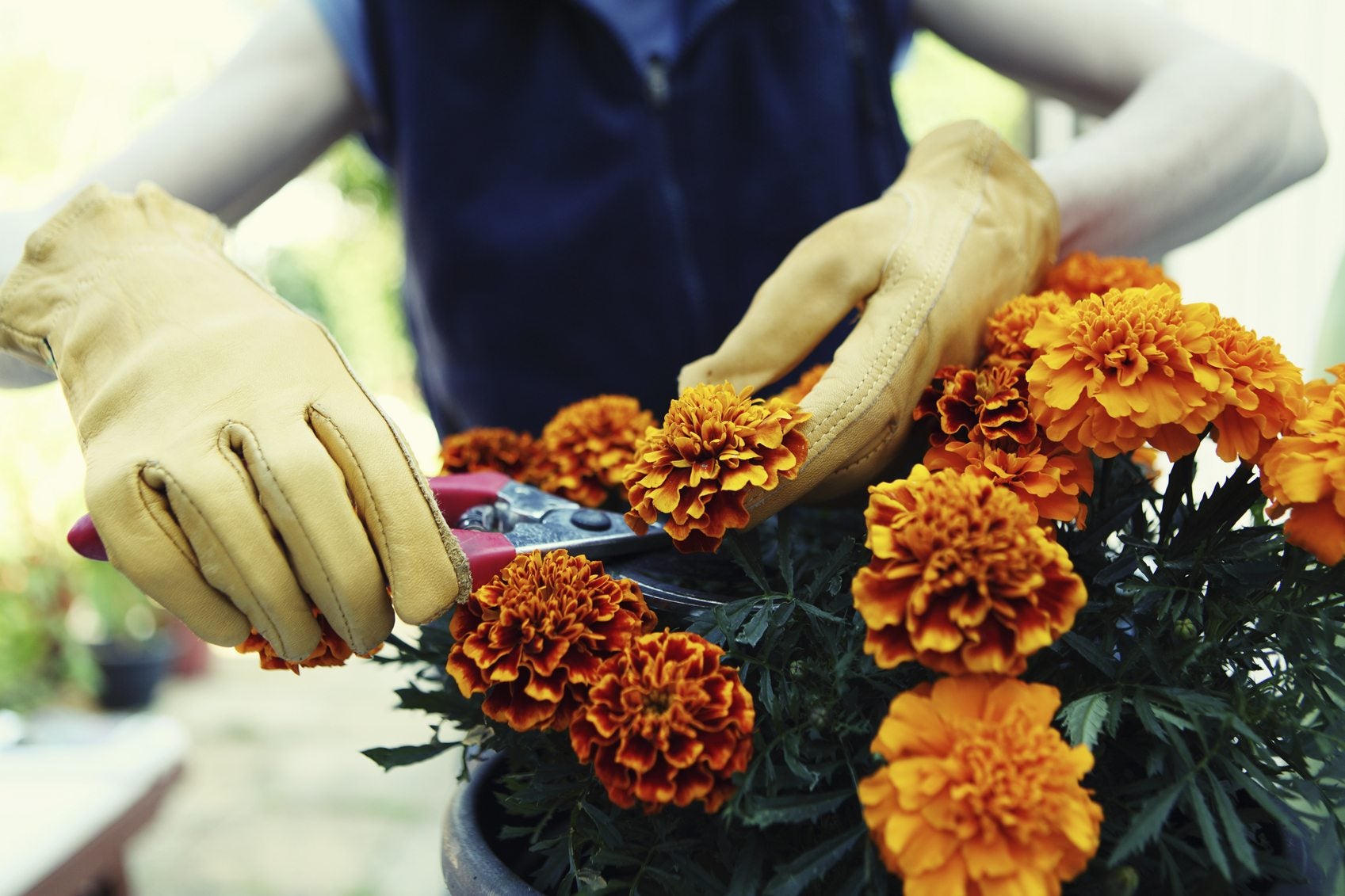 Deadheading Marigold Plants: When To Deadhead Marigolds To Prolong Blooming
Deadheading Marigold Plants: When To Deadhead Marigolds To Prolong BloomingShould you start removing spent marigold flowers? Marigold deadheading does help keep the garden looking its best and encourages new blooms. Click on this article for more information about deadheading marigold plants.
By Teo Spengler
-
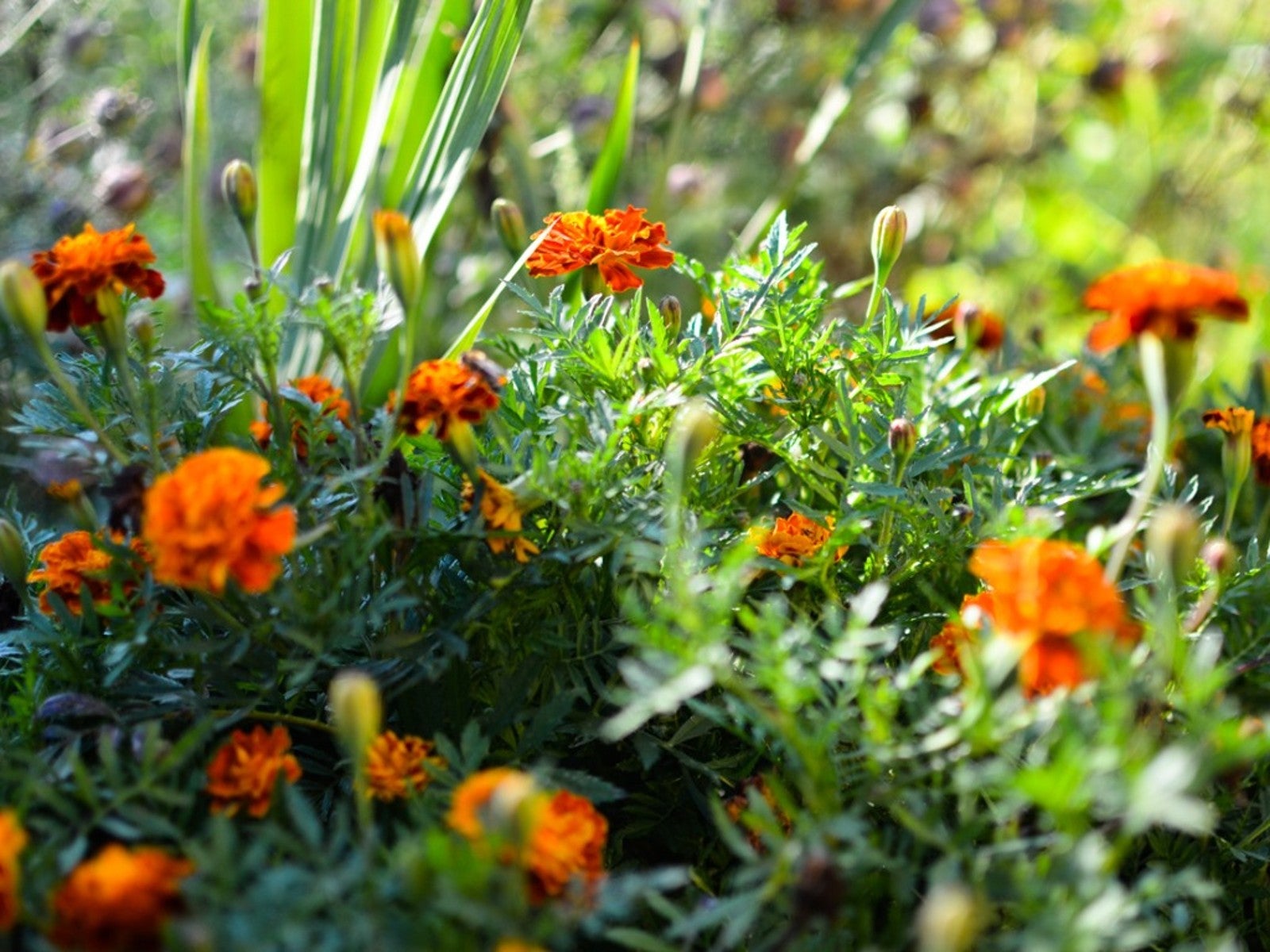 Marigold Leaf Problems: Treating Marigolds With Yellow Leaves
Marigold Leaf Problems: Treating Marigolds With Yellow LeavesMarigold blossoms are a bright, sunny yellow, but the foliage below the flowers is supposed to be green. If your marigold leaves are turning yellow, you've got marigold leaf problems. To learn what might be causing yellowing marigold leaves, click here.
By Teo Spengler
-
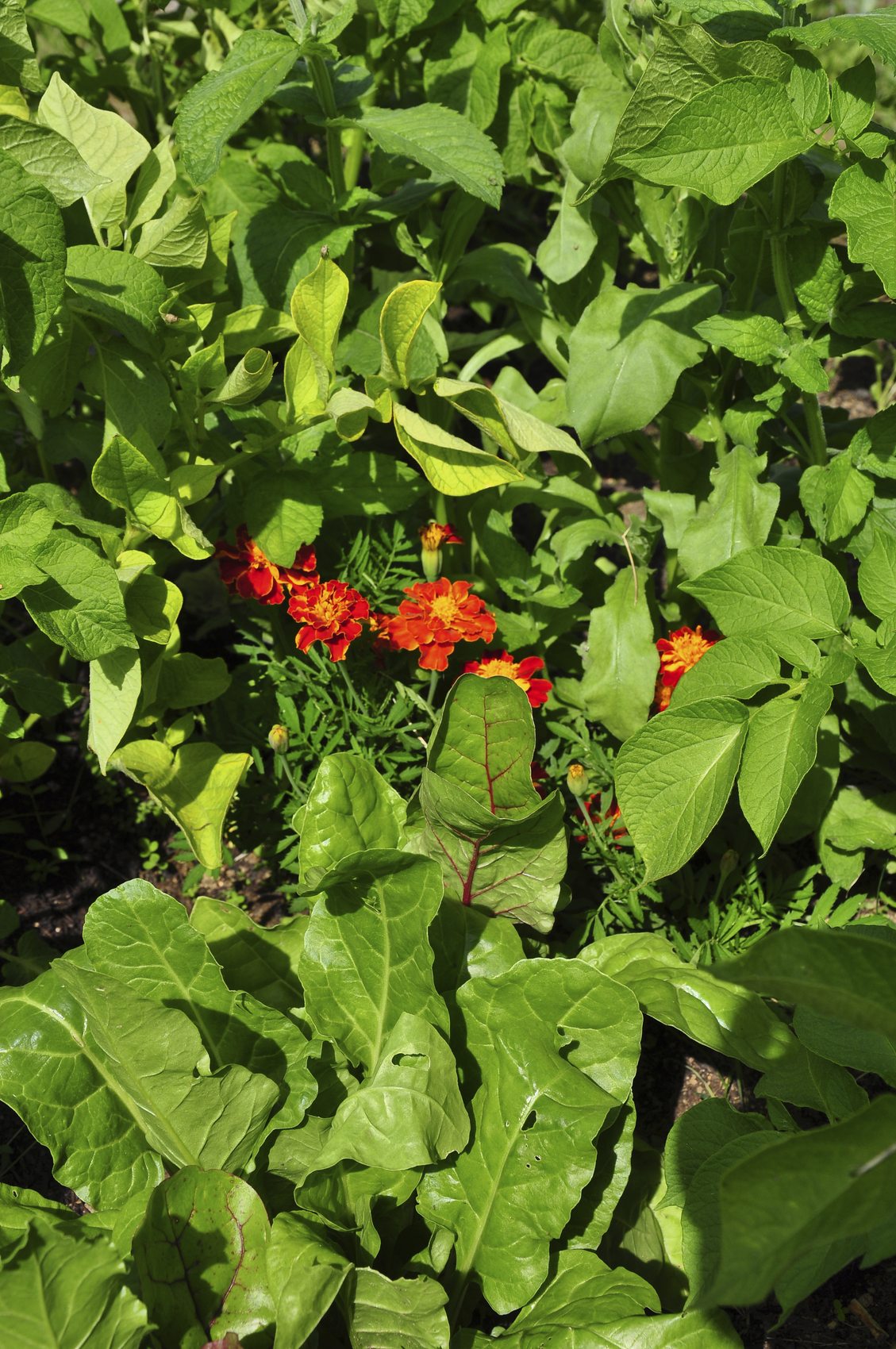 Using Marigolds Around Plants – Do Marigolds Keep Bugs Away
Using Marigolds Around Plants – Do Marigolds Keep Bugs AwayDo marigolds keep bugs away? The best way to find out is to experiment in your own garden, and you really can't go wrong. There's no doubt they attract a variety of beneficial insects that prey on bad bugs. Learn more about marigold plants and pests here.
By Mary H. Dyer
-
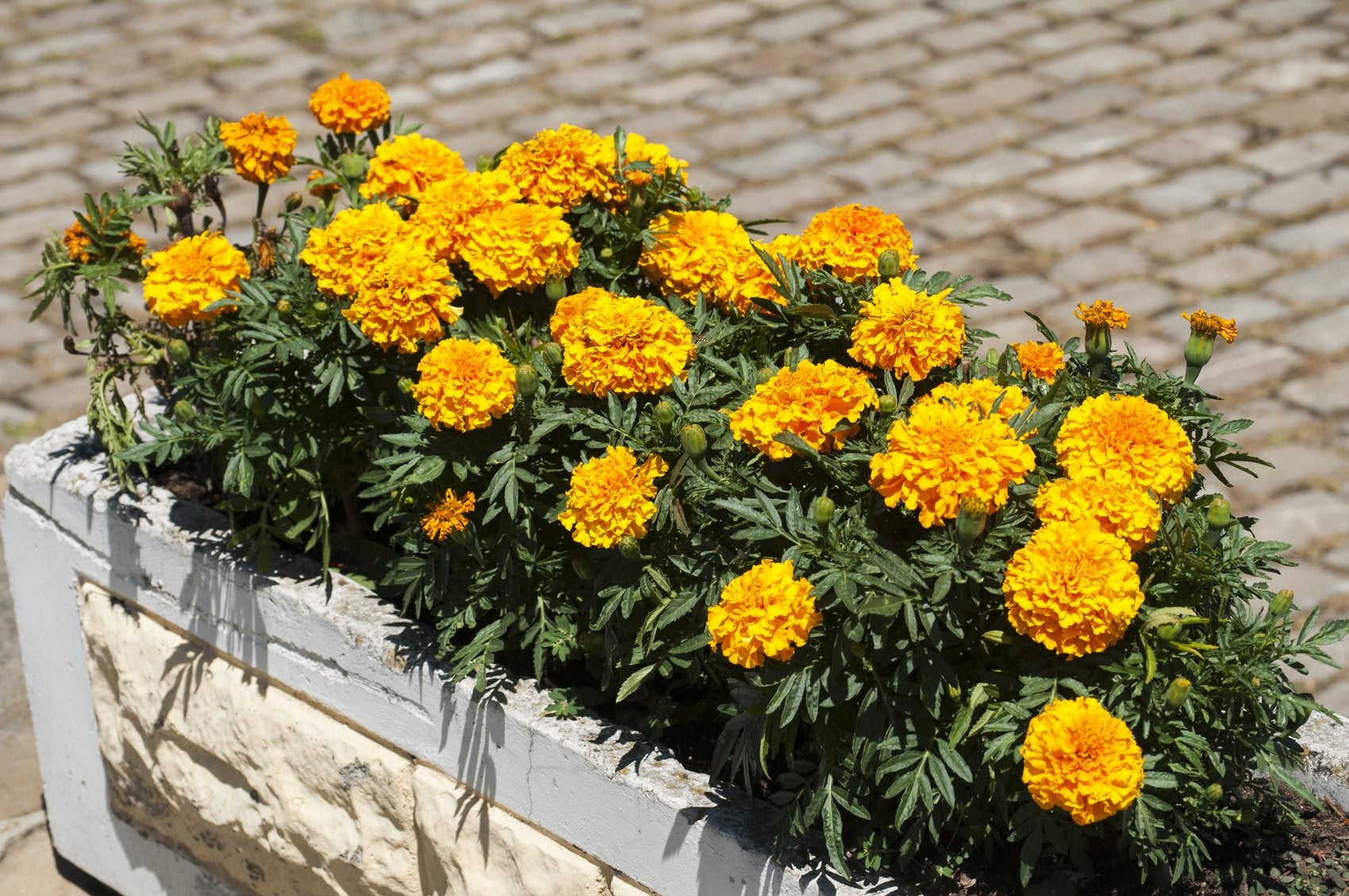 Caring For Marigolds In Pots – Tips On Growing Marigolds In Containers
Caring For Marigolds In Pots – Tips On Growing Marigolds In ContainersMarigolds are easygoing plants that bloom reliably, even in direct sunlight, punishing heat and poor to average soil. Although they are beautiful in the ground, growing marigolds in containers is a surefire way to enjoy this delightful plant. Learn more here.
By Mary H. Dyer
-
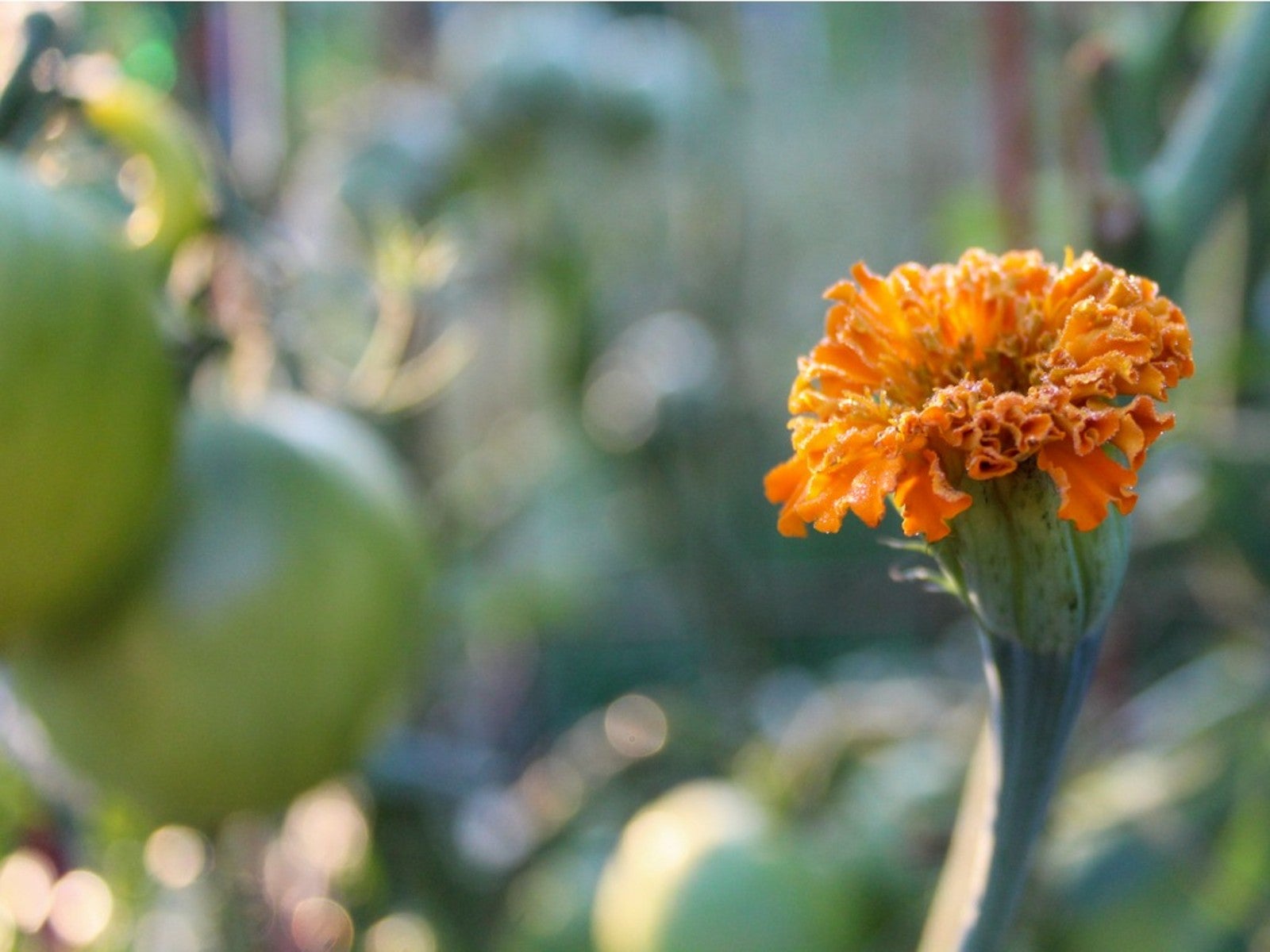 Marigold And Tomato Companion Planting: Do Marigolds And Tomatoes Grow Well Together
Marigold And Tomato Companion Planting: Do Marigolds And Tomatoes Grow Well TogetherMarigolds are appreciated for much more than their beauty; marigold and tomato companion planting is a tried and true technique used by gardeners for hundreds of years. What are the benefits of growing these together? Click here to find out.
By Mary H. Dyer